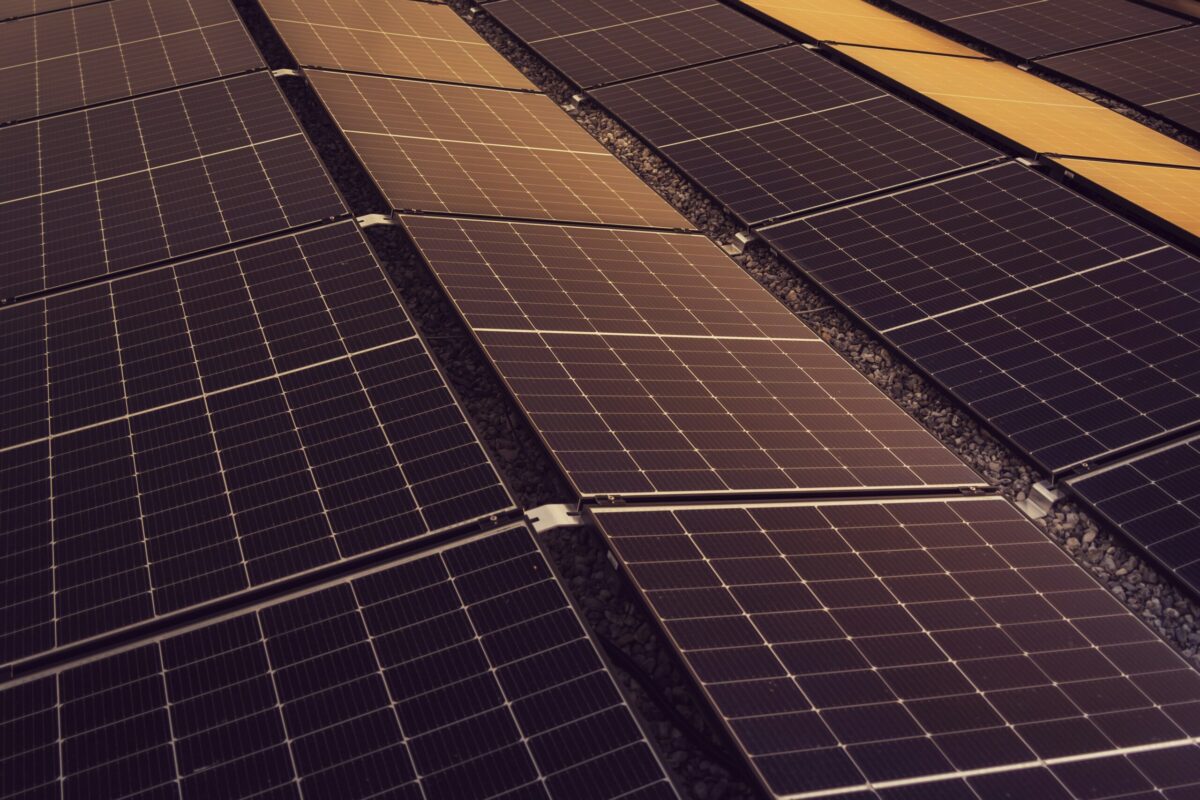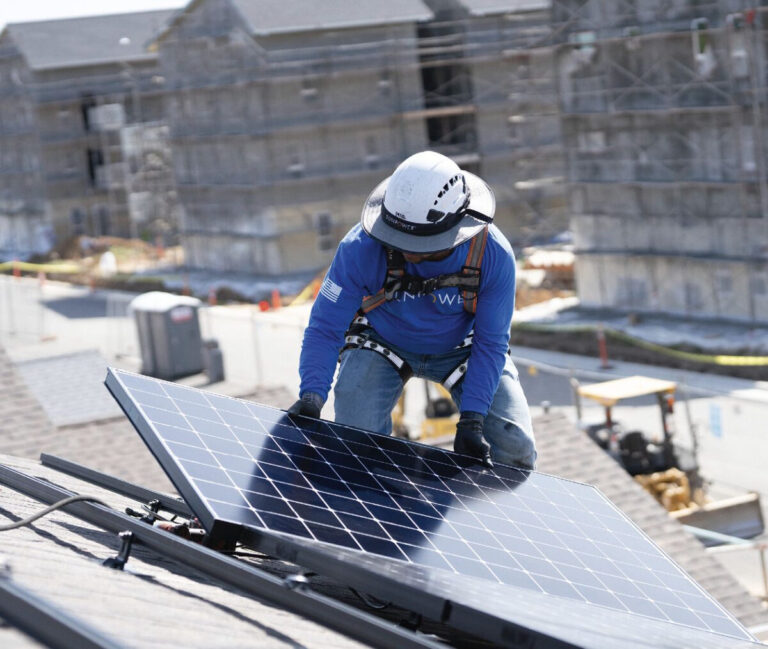From pv magazine 24/09
The residential solar industry is often called the “solar roller coaster” in the United States because it has seen peaks and valleys in customer demand, business profitability and investment.
SunPower, one of the largest and oldest solar energy companies in the United States, has suffered its latest dip after announcing bankruptcy and delisting from the Nasdaq Stock Exchange. Once valued as worth billions of dollars, SunPower shares fell more than 99% from their all-time high valuation in 2007.
The company provided homeowners with rooftop solar, energy storage and electric vehicle (EV) charging. It operated a dealer network in which small businesses could act as sales agencies, while SunPower handled installations, or could be installer-dealers, with SunPower providing equipment purchasing services. In addition, the company was a leading manufacturer of solar cells and modules for many years and was active in the large-scale projects segment. The manufacturing company was spun off in 2020 to form the separate company Maxeon. On August 12, 2024, SunPower said it would be delisted as a publicly traded company.
Problems with the industry
U.S. residential solar saw its strongest years during the Covid-19 pandemic, capping a broader trend of homeowners making improvements to their properties. Then, when post-pandemic inflation took hold, federal interest rates were raised and with them lending standards, making it more expensive for homeowners to invest in solar energy. With more expensive solar panels, tighter home budgets and long-term returns on investments, homeowners began to doubt the financial prospects of solar energy.
That loss of value was further exacerbated when the California Public Utilities Commission adopted its Net Energy Metering 3.0 (NEM 3.0) regime in late 2022. The new regulatory system reduced by 80% the rates that utilities must pay to solar customers for electricity they export to the grid.
The move to NEM 3.0 led to a temporary boom among customers seeking legacy NEM 2.0 rates, and then a crisis in California. “With loans expensive and incentives removed, residential PV in California has been devastated,” wrote pv magazine Editor Tristan Rayner at the time. “By the end of 2023, rooftop solar installations had fallen by 80%, leading to more than 17,000 layoffs – 22% of the industry.”
California represents about half of the U.S. residential solar market, so the blow to companies with a strong presence in the state, including SunPower, was deeply felt. Solar installers in California are still adapting to NEM 3.0, which now makes battery energy storage an essential part of any solar project to capture the savings value for customers. Although the addition of a battery increases the sticker price of home solar, it adds benefits such as backup power. Solar installers with a strong focus on their battery offerings are expected to outperform those without.
SunPower’s battle
For SunPower, problems started piling up about a year after the introduction of NEM 3.0, as the regime’s negative impact on demand became more apparent and “higher-for-longer” interest rates became a reality.
In December 2023, the company released a letter warning investors that the company was struggling to remain viable. The stock price fell 40% in December 2023.
The fear was fueled by a technical default on the company’s debt. In October 2023, SunPower announced it would restate its third-quarter financial results due to an inventory reporting error related to one of its subsidiaries. By delaying financial reporting, SunPower violated key terms of several credit agreements, exposing the company to lender demands for immediate repayment.
SunPower stated that violating credit terms could result in lenders demanding immediate repayment of more than $65 million in debt, raising doubts about the company’s ability to keep operations going. SunPower says it is trying to obtain a waiver from its lenders and that without a waiver it may not have sufficient resources to support day-to-day operations.
On December 8, 2023, the company received a relief that saved it from technical bankruptcy and gave it access to $75 million in financing. SunPower was given until January 19, 2024 to get its finances in order or obtain further forgiveness of the $65 million debt it would otherwise be obliged to repay.
At the time, an analyst told Reuters that the company had a good chance of obtaining an exemption because the problems were essentially the result of a technical problem. However, Roth Capital Partners warned that if SunPower were unable to obtain a waiver, the company could face a “cascade” of cash flow problems, leading to restrictions on its dealers.
SunPower – Maxeon
SunPower is not to be confused with the SunPower brand solar panels designed, manufactured and sold by Maxeon Solar Technologies. “Other than a product brand name, there is no existing relationship between Maxeon and SunPower Corp.,” a Maxeon Solar spokesperson told pv magazine after SunPower’s bankruptcy announcement. SunPower Corp. and Maxeon parted ways in August 2020, when Maxeon spun off as an independent company. Maxeon previously had a supply agreement to supply solar panels to SunPower Corp. “But that agreement was terminated in 2023 and Maxeon has not shipped any products to SunPower Corp since the first quarter of 2024,” the spokesperson added.
Cash flow
Not long after the warnings were issued about cash flow in the US residential solar sector, negative headlines began to appear.
In February 2024, listed installer Sunworks filed for bankruptcy following a 29.5% decline in quarterly revenue, year-on-year, for the third quarter of 2023, led by a 44.5% decline in residential PV activities. That came after major installer Sunrun posted a loss of more than $1 billion in the previous quarter.
In April 2024, SunPower announced it would close several business units and cut 1,000 jobs – just over a quarter of its workforce. The company announced plans to phase out its residential solar installation sites and close its direct sales unit. “While we have worked hard to prevent this outcome, the market is recovering more slowly than we initially expected,” said Tom Werner, CEO. The company said it would still operate its new homes division.
Further struggle
In June 2024, another major US installer, Titan Solar, said it would close its doors. Founded in 2013 in Arizona, the company has been among the nation’s largest residential solar installers, with tens of thousands of installations in 16 states.
Titan Solar had grown rapidly through its Solar Dealer program, a network of partnerships with sales organizations that sold Titan services while the company focused on installation. The partnership was based on a pricing model where Titan charged a fee for completing projects and dealers kept the balance as a sales commission.
“Despite these achievements, the company has faced criticism for its business practices, workmanship and customer service, leading to numerous negative reviews and legal disputes,” said Ara Agopian, CEO of Solar Insure, a residential solar energy provider. The insurance company said its reliance on third-party dealers for sales created a layer of separation between Titan and its customers, leading to communication gaps and an inconsistent service experience.
Solar Insure said that while the business model of Titan’s dealer network was lucrative, it proved to be a double-edged sword. The main motivation of the dealers in the sales organization was to maximize their commissions, according to Solar Insure, which sometimes led to aggressive sales tactics and overselling of systems without sufficient consideration of customer needs.
“This discrepancy between sales promises and installation actuals further strained Titan’s resources and customer relationships,” Agopian said. “As economic conditions deteriorated and financing costs rose, financial pressures on both Titan and its dealers increased, exacerbating cash flow problems and operational inefficiencies.”
Last days
By July 2024, SunPower’s stock price had fallen 70% as it became clear the company was unlikely to survive. At that time, the company said it would stop co-signing new agreements and would not be able to support installation services for shipments that were in transit or had already been delivered.
On August 6, 2024, the company was officially declared bankrupt. “SunPower has faced a severe liquidity crisis caused by a sharp decline in solar market demand and SunPower’s inability to obtain new capital,” said Matthew Henry, SunPower’s Chief Transformation Officer.
The company said it would sell its assets, including installation company Blue Raven Solar and its new housing unit, to Complete Solaria for $45 million. SunPower asked the courts to approve the deal by the end of September 2024.
“SunPower’s problems are emphatically a company-specific issue and should not be viewed as commentary on the underlying demand for residential solar in the US,” said Pavel Molchanov, an analyst at financial services firm Raymond James.
Ohm Analytics reports that the U.S. residential solar market will be down about 20% industry-wide by 2024. For 2025 and 2026, Ohm has forecast modest 5% to 10% growth in the sector, indicating that the US home solar market has already hit the mark. the bottom of the most recent dip in the solar coast.
This content is copyrighted and may not be reused. If you would like to collaborate with us and reuse some of our content, please contact: editors@pv-magazine.com.
Popular content



